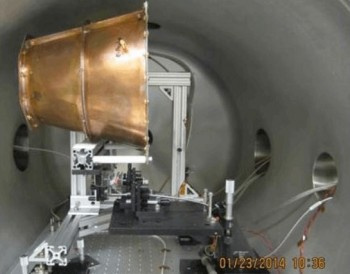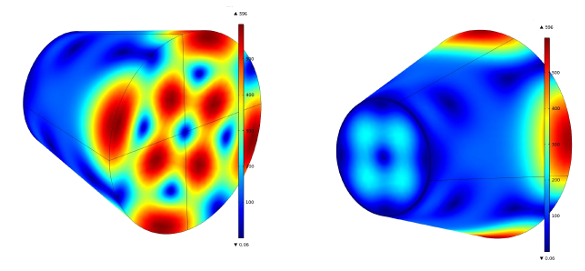
Electromagnetic Propulsion
June 11, 2015 While thermodynamics has a quantity called "free energy," free in this case just means available. We all know that nothing good can be obtained at no cost. That idea is summarized by the expression, "There's no such thing as a free lunch. The economist, Milton Friedman, actually used this expression as the title of a book.[1] The No Free Lunch idea describes the fundamental economic principle of opportunity cost. Opportunity cost is the money you would have made by selling your graphite and wood, rather than transforming them into pencils for sale. Over the centuries, ambitious inventors have struggled for a free lunch in the form of a perpetual motion machine. I wrote about such machines in two previous articles (Second Law of Thermodynamics, February 7, 2011, and Perpetual Motion, May 17, 2013). Physicists don't waste their energy (pun intended) on perpetual motion, since it's disallowed by the first and second law of thermodynamics. The first law of thermodynamics is the conservation of energy law, while the second law states that thermal systems will equilibrate after sufficient time, and natural processes are irreversible. Thermodynamics has been proven valid for hundreds of years, so physicists are not timid in their belief that perpetual motion is impossible. In 2003, the American Physical Society issued the following statement:"The American Physical Society deplores attempts to mislead and defraud the public based on claims of perpetual motion machines or sources of unlimited useful energy, unsubstantiated by experimentally tested established physical principles."The US Patent and Trademark Office does not grant patents for perpetual motion machines, as explained in its Manual of Patent Examining Procedure (MPEP).
"A rejection on the ground of lack of utility is appropriate when (1) it is not apparent why the invention is “useful” because applicant has failed to identify any specific and substantial utility and there is no well established utility, or (2) an assertion of specific and substantial utility for the invention is not credible. Such a rejection can include the more specific grounds of inoperativeness, such as inventions involving perpetual motion."(Section 706.03a)Perpetual motion might lurk outside the realm of thermodynamics. One fictional example is the Zero Point Module (ZPM) of the various Stargate television series. The Zero Point Modules apparently harvest the zero-point energy of the vacuum. Zero-point energy is the ground state energy of the vacuum. The uncertainty principle requires every quantum mechanical system to have a ground state energy that's greater than zero. One manifestation of this is that there's motion even at absolute zero. For this reason, every place in the universe seems to sit atop a baseline energy reservoir, although the term, "reservoir," is a misnomer, since it doesn't appear possible to tap into this energy. There's an effect involving the vacuum zero-point energy that encourages speculation that this energy can fuel some interesting devices. This is the Casimir effect, predicted in 1948 by Dutch physicist, Hendrik Casimir. Casimir predicted that very closely-spaced conductors will attract each other in a perfect vacuum. That's because the region between the conductors form an electromagnetic resonator that only supports a subset of the frequency modes of the vacuum state, so the vacuum outside this region, which supports all modes, will exert a pressure on the conductors.
 | Illustration of the Casimir effect. The vacuum region outside parallel conducting plates supports all modes, whereas the number of modes allowed between the plates is restricted. There is a net exterior pressure that acts to push the plates together. (Via Wikimedia Commons). |
 | The electromagnetic propulsion device in a vacuum chamber. Experiments in vacuum eliminate the possibility that the propulsion forces arise from thermal convection. (NASA photo.) |
 |
| Magnetic field distribution in the NASA electromagnetic propulsion device. Asymmetry is a necessary requirement for propulsion in a preferred direction.(NASA illustration.) |
References:
- Milton Friedman, "There's No Such Thing as a Free Lunch," Open Court Publishing Company, 1975, ISBN 087548297X (via Amazon).
- S. K. Lamoreaux, "Demonstration of the Casimir Force in the 0.6 to 6 μm Range," Phys. Rev. Lett. vol. 78, no. 1 (January 6, 1997), pp. 5-8.
- José Rodal, Jeremiah Mullikin and Noel Munson, "Evaluating NASA's Futuristic EM Drive," NASA Press Release, April 29, 2015.
- Web Site of the 50th AIAA/ASME/SAE/ASEE Joint Propulsion Conference, Cleveland, Ohio, July 28-30, 2014.
- EM Drive Page on Wikipedia.